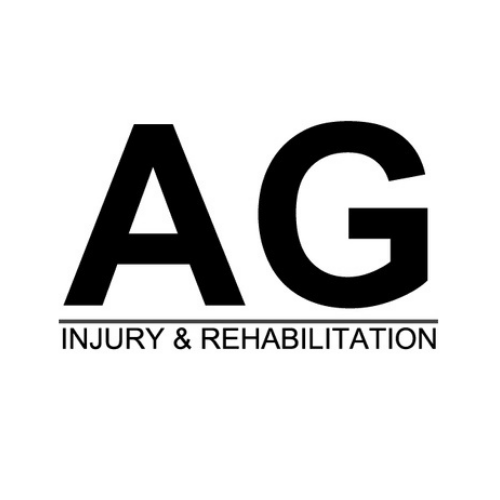Runners are notoriously consistent with training, constantly chasing that runner's high; so when niggles or injuries crop up, it can be quite frustrating. What's worse is that with the repetitive motion of steps pounding the ground over and over again, overuse or overtraining injuries can be quite common if not combined with an adequate injury prevention plan.
Hip pain is common in runners or in other sports which require a lot of running both during match days or in training (like football or rugby). Not many of us really think to directly target the hip flexors when we are working out either.
So in this article I'll split my advice up into two parts; how to treat hip flexor pain and also how to bulletproof your hips to avoid any future hip flexor injury.
But first, let's look at what the hip flexor is and what role it plays.
The role of the hip flexors
The hip flexors are a group of muscles at the front of the hip joint that are responsible for flexing the hip and raising the legs. They are essential in movement as they are used every time you stand or take a step. The primary hip flexors consist of five key muscles that contribute to hip flexion: iliacus, psoas, pectineus, rectus femoris, and sartorius. The primary hip flexors are the iliopsoas muscles, assisted by the sartorius and rectus femoris muscles. The hip flexors are important to keep the posterior pelvic muscles in balance. Having strong hip flexors is one way to strengthen the core, along with practicing good posture. Stretching these muscles will also increase their length and help prevent injury. Weak hip flexor muscles can lead to pain in the lower back, hip, and knee due to the overworked joints that compensate for the deficient muscle tissues. Therefore, it is essential to strengthen the hip flexors to avoid injury and ensure overall muscle and postural health.
The role of the hip flexors when running
The hip flexors play a crucial role in running, as they are responsible for bringing the swinging leg forward and preparing it for another footstrike. As we move from midstance to toe-off, the hip flexor muscles contract to allow the tendons to store energy, which then at toe-off, this stored energy slingshots the leg forward. The hip flexors also affect the smoothness of your stride, feed into your quads, and affect your hamstrings. They are especially important during higher intensity spaces, such as sprinting or during the final kick of a race. Tight hip flexors can affect your gait, make you less efficient, lead to injury, or at least feelings of tightness in areas such as the lower back. Therefore, it is essential to include work on your hip flexors to make them mobile and strong to improve your running. An increase in hip flexion strength can help to improve sprint and agility performance for physically active, untrained individuals.
Hip flexor injuries
A hip flexor injury can be painful and debilitating, and they can occur when one or more of the hip flexor muscles becomes stretched or torn[1]. The following are some common causes of hip flexor injuries:
- Sudden movements, such as sprinting, kicking, and changing direction while running or moving.
- Weak muscles.
- Not warming up.
- Stiff muscles.
- Trauma or falls.
Hip flexor injuries can cause a range of symptoms, depending on the severity of the injury. These symptoms may include:
- Mild pain and pulling in the front of the hip.
- Cramping and sharp pain.
- Difficulty getting out of a chair or coming up from a squat.
- Difficulty with climbing stairs or walking up or down sloped surfaces.
- Severe pain, spasms, bruising, and swelling. These are signs of a complete tear, which is less common.
Hip flexor injuries can be treated with rest, ice, compression, and elevation, combined with anti-inflammatory medication. In severe cases, crutches may be necessary to keep weight off the hip. Most hip flexor strains or tears are treated without surgery, but if the muscle has been completely torn, surgery may be required to repair the hip flexor and restore function. Recovery time can vary depending on the severity of the injury, but it is important to avoid strenuous activity for 10-14 days after the injury. To prevent hip flexor injuries, it is essential to warm up before physical activity, stretch regularly, and strengthen the hip flexor muscles.
Symptoms of a hip flexor strain
A hip flexor strain is essentially a tear of the muscle fibres and can cause a range of symptoms, depending on the severity of the injury. These symptoms may include:
- Pain in the front of the hip.
- A feeling of tightness or pulling in the hip.
- Trouble walking or moving without limping.
- Weakness in the lower abdomen or hip.
- Bruising.
- Swelling.
- Tenderness.
- Cramping.
- Sharp pain.
- Muscle spasms.
- Difficulty getting out of a chair or coming up from a squat.
- Difficulty with climbing stairs or walking up or down sloped surfaces.
Hip flexor strains can be caused by sudden movements, weak muscles, not warming up, stiff muscles, or trauma or falls. To diagnose a hip flexor strain, a full musculoskeletal assessment by a physiotherapist may be enough, but sometimes imaging tests such as ultrasound, CT scan or MRI may be preferred by your healthcare provider for a more severe strain or to rule out other pathologies. Treatment for hip flexor strains includes rest, ice, compression, and elevation, combined with anti-inflammatory medication. In severe cases, crutches may be necessary to keep weight off the hip. Recovery time can vary depending on the severity of the injury, but it is important to avoid strenuous activity for 10-14 days after the injury. To prevent hip flexor strains, it is essential to warm up before exercise, stretch regularly, and strengthen the hip flexor muscles.
It is important to note that there are a number of delicate tissues within the hip as it is a highly complex joint. Symptoms therefore crossover quite a lot and a muscle strain can share a lot of the signs with other sports injuries such as a hip impingement, labral tear and hip bursitis. If your injury lasts longer than expected, it might be worth getting checked out to rule out anything else.
How to treat a hip flexor strain
The good news is, most hip flexor injuries can be managed conservatively with some acute injury management and exercise prescription. They can be painful and debilitating, but there are several ways to treat them. The following are some ways to treat a hip flexor injury:
1. Rest: Stop any activity that causes pain and avoid overstretching the muscle.
2. Ice: Apply a cloth-covered ice pack or cold compress for 10-15 minutes every hour for the first day after your injury.
3. Compression: Use a compression bandage to help compress and stabilise the hip flexor and quadriceps muscles to limit inflammation and speed up the healing process.
4. Elevation: Elevate the affected area to reduce swelling within the muscle.
5. Over-the-counter medication: Taking over-the-counter pain medication, such as ibuprofen, may help with hip flexor pain and reduce inflammation in the early stages of injury.
6. Physical therapy: If pain persists longer than a couple of weeks, your physician may prescribe a physical therapy program to help you increase your flexibility and strength.
7. Platelet-rich plasma (PRP) injection: A PRP injection can sometimes be used to expedite healing by injecting concentrated growth factor platelets from the patient's blood into the hip.
8. Surgery: Although most hip flexor strains or tears are treated without surgery, if the muscle has been completely torn, you may require surgery to repair the hip flexor and restore function.
Recovery time can vary depending on the severity of the injury, but it is important to avoid strenuous activity for 10-14 days (dependant on the grade of the strain) after the injury to give the muscle fibres time to heal. To prevent hip flexor injuries, it is a good idea to warm up before running, stretch regularly, and strengthen the hip flexor muscles.
Preventing hip flexor injuries in runners
Prevention is always better than the cure, and although it's easy to sit here and type that... we're all guilty of getting our running trainers on and going straight out for a 5k without properly warming up. The following video gives you a few exercises you can do before pounding the streets and chasing those PB's! Just 30-60 seconds of each exercise should be enough to get the heart rate up and the blood flowing to your muscles.
@aginjuryrehab How to warm up for a run! Warm up with me for my first @Runna tempo run. #running #runningwarmup #warmup #runna #runner #tiktokrunners #runnersoftiktok #halfmarathontraining #halfmarathon #warmup #injuryprevention #injurypreventionspecialist ♬ All The Way Up(Remix) - 笑匠&音源&十八闲客
In terms of a more structured, long term injury prevention strategy, there are exercises we can include in our weekly workout routines to build resilience, improve endurance and develop strength in our hip flexors to help them be able to cope with the demands of running. Here are 8 running-specific strengthening exercises for the hips:
- Walking lunges: Walking lunges build strength throughout your hip flexors, as well as in the major muscles of your legs.
- Leg raises: Lie on your back with your legs straight and lift one leg at a time, keeping it straight, until it is perpendicular to the floor. Hold for a few seconds and then lower it back down. Repeat with the other leg.
- Mountain climbers: Start in a plank position and bring one knee up to your chest, then switch legs. This exercise targets your hip flexors and core.
- Hip flexor stretch: Kneel on one knee with your other foot in front of you, and lean forward until you feel a stretch in your hip flexor. Hold for 30 seconds and then switch legs.
- Squats: Squats work your glutes, quads, and hip flexors. Stand with your feet shoulder-width apart and lower your body as if you were sitting in a chair, keeping your back straight. Return to standing and repeat.
- Step-ups: Step-ups work your hip flexors, glutes, and quads. Stand in front of a step or bench and step up with one foot, then step back down. Repeat with the other foot.
- Clamshells: Lie on your side with your knees bent and your feet together. Keeping your feet together, lift your top knee as high as you can without moving your pelvis. Lower your knee back down and repeat.
- Bridges: Lie on your back with your knees bent and your feet flat on the floor. Lift your hips up towards the ceiling, squeezing your glutes and engaging your hip flexors. Lower your hips back down and repeat.
Incorporating these exercises into your training routine can help prevent hip flexor injuries and improve your running performance. It is important to start with low intensity and gradually increase the difficulty of the exercises as your strength improves.
If you're a frequent runner, why not join my free Strava group for runners! It's nothing serious... but we can all spur each other on to run further and faster! I even put the odd virtual race on for us all to get involved in!

